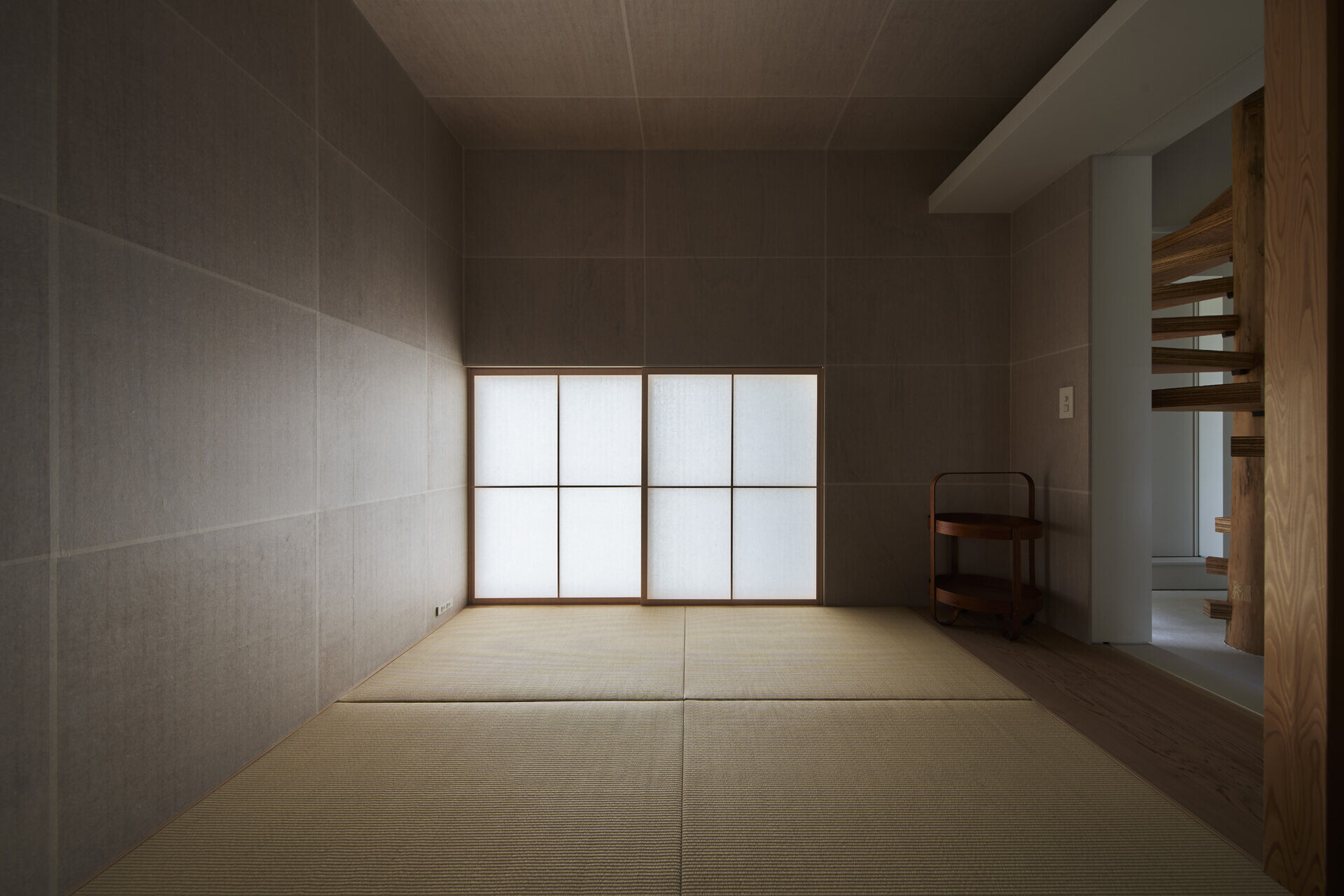The site is located in Nishi ward, Niigata city; atop the Niigata sand dune range, formed along the coast around 1700 years ago.
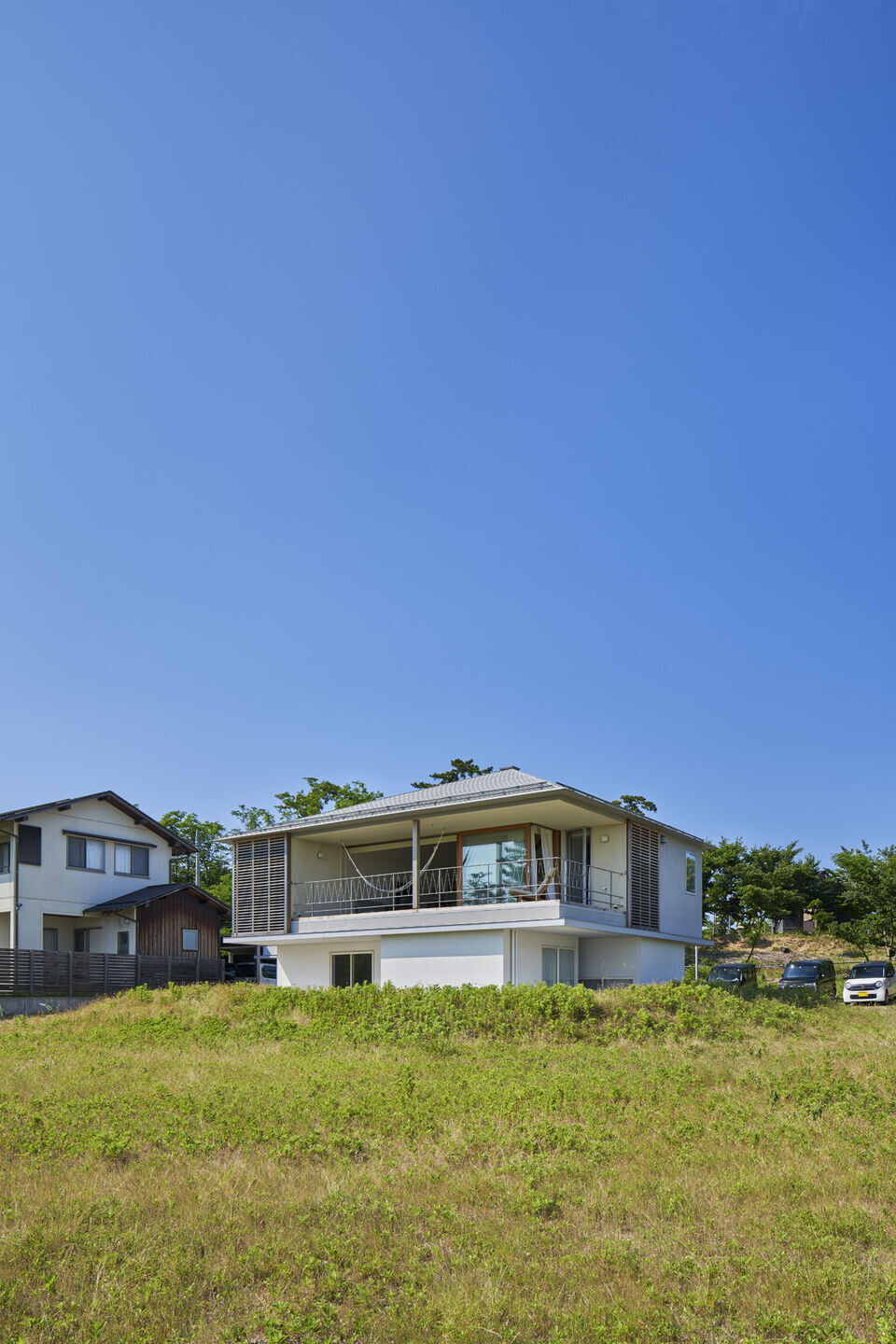
The terrain of this region has height modulations of about 30m and the area has high density residential neighborhoods with narrow roadways while also having its antithesis of large, expansive grasslands in the outskirts.
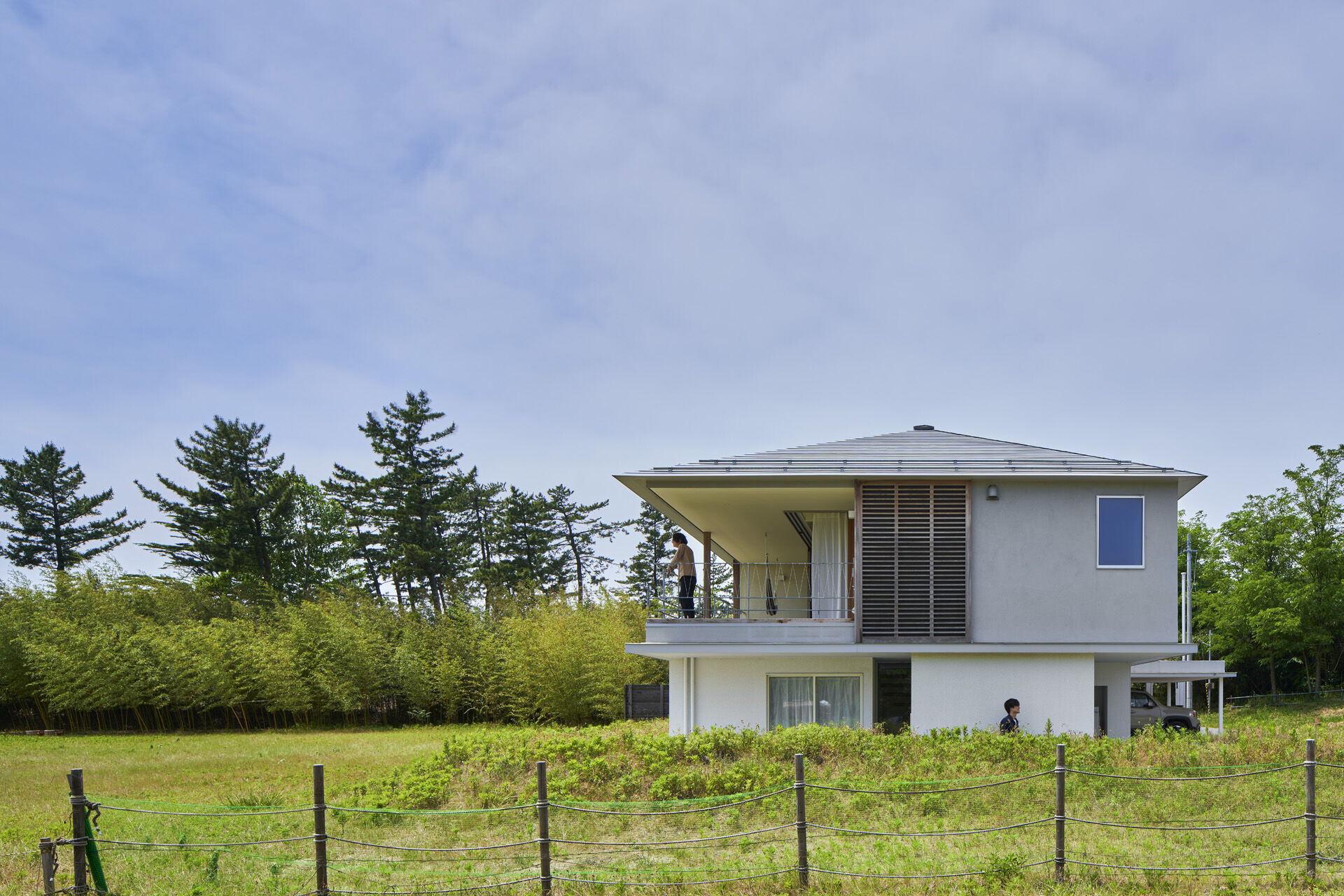
In these outskirts, we designed a house for a couple and their children, which retains the characteristics of the site, extreme sparsity and the steep height modulations.The site is 400 sqm, but the surrounding open grassland is several times this area, and there are no future plans to build upon this land.
In this setting, how does one tie in the vast grassland and draw it into the daily lives of the residents, while also giving the house a sense of security?
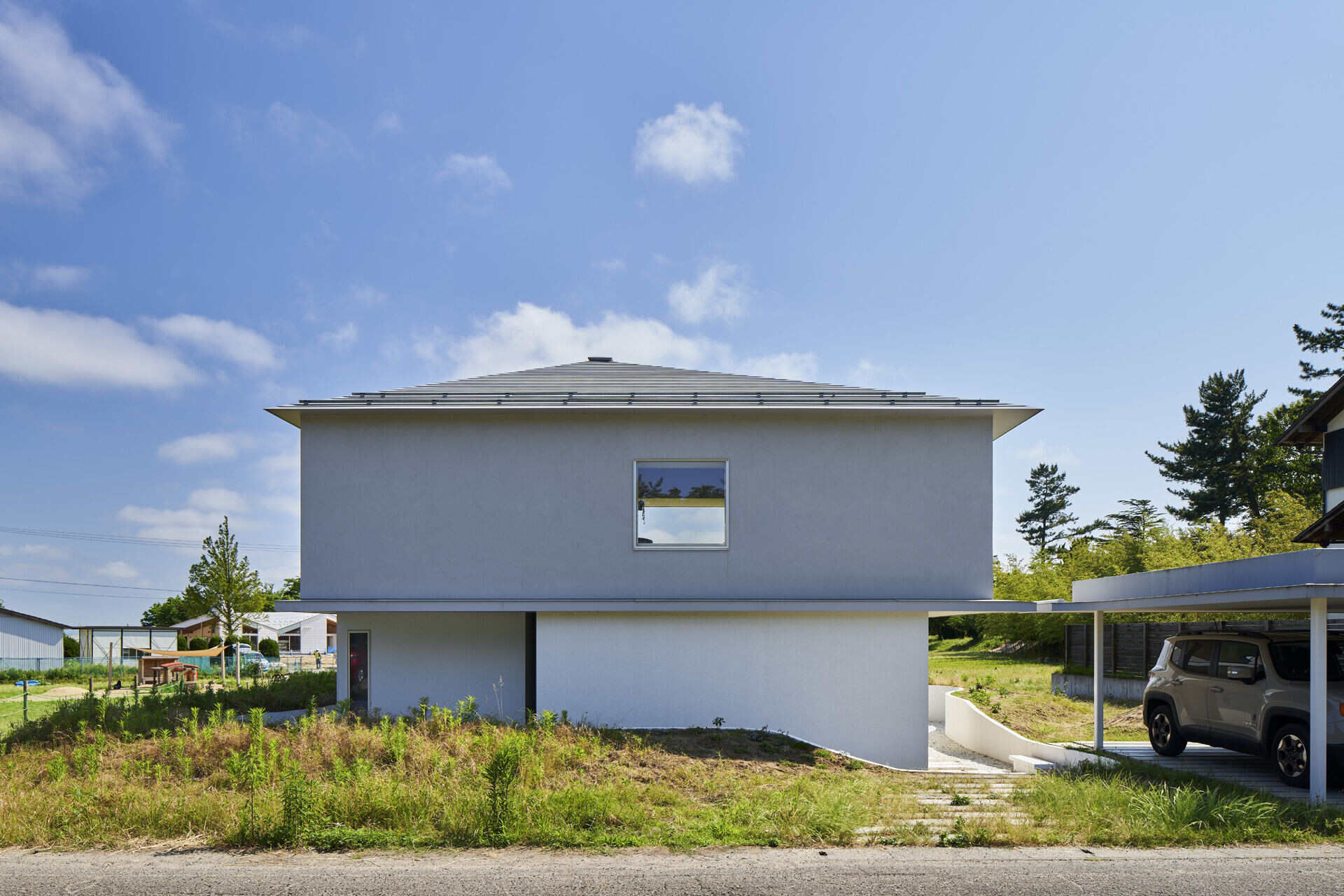
We started the design process by trying to bridge these two contrasting elements and utilizing the sand dunes to devised a ‘possible way of building’.
We constructed this space applying the primitive technique of construction; digging, piling and embedding pillars in sand to construct a sun-shading umbrella.
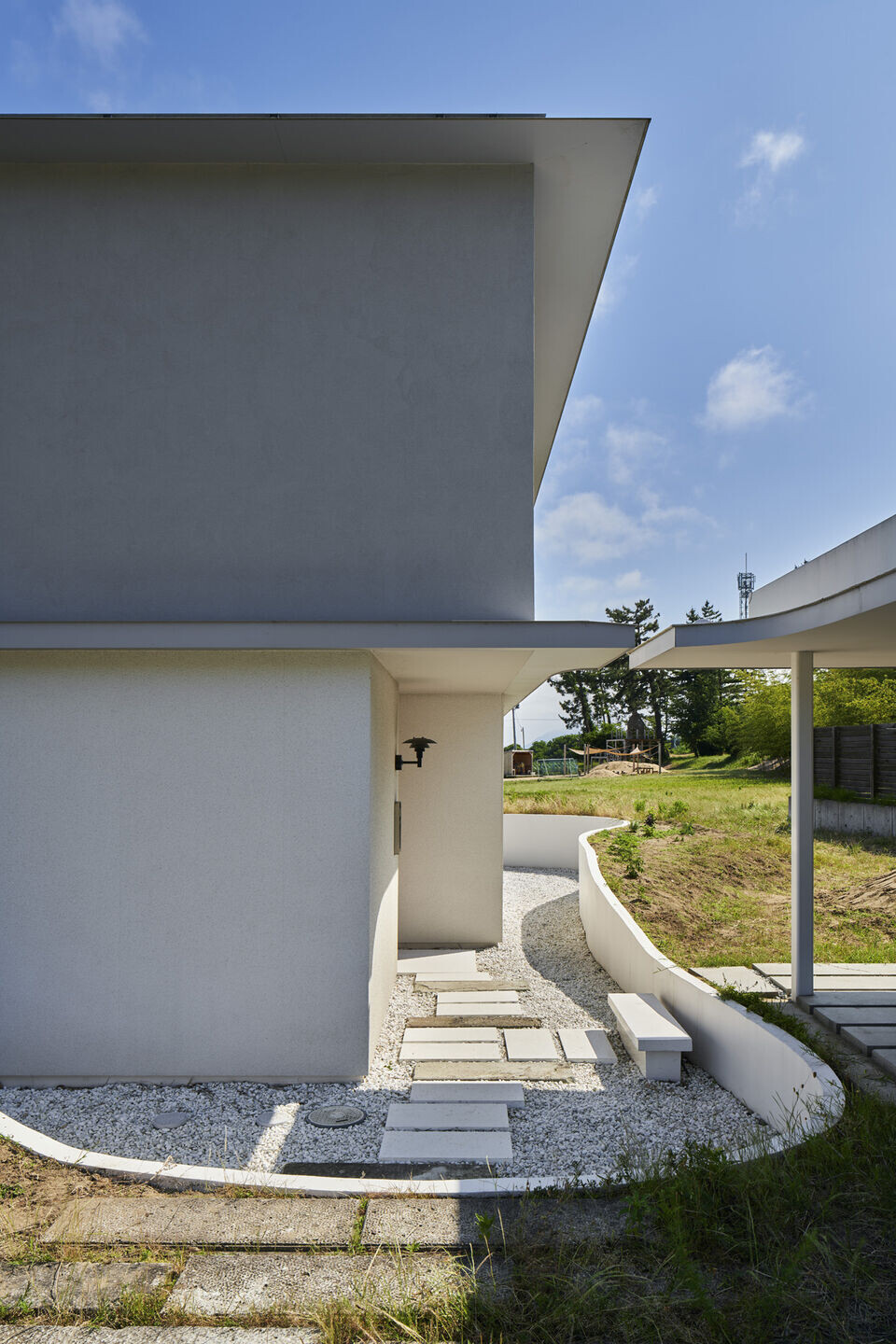
Digging into the sand, we situated the building inside this shallow excavation.
The excavated sand was used to fill up the surrounding area and create a gentle boundary between the house and the vast, open grassland.
This gives all rooms on the 1F a higher degree of privacy and creates distance between inside and surrounding environment.
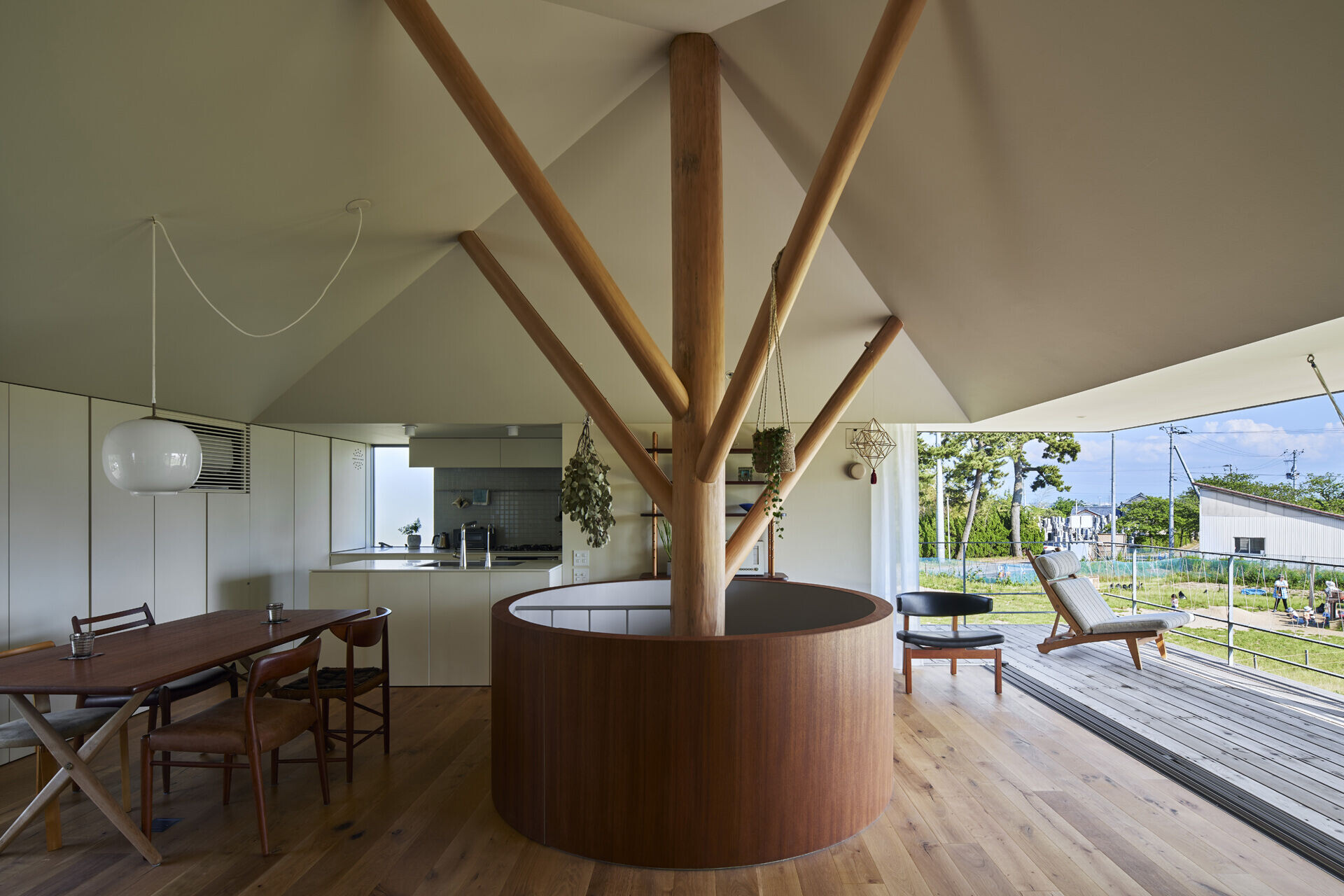
Although the LDK is located on the 2F, since the building is situated inside the land rather than atop, the 2F height is lower than typical and just slightly higher than the ground.From here we are able to capture a line of sight that takes in the surrounding grassland, the slightly faraway hills and the town streets.In the center of the LDK, a 360mm diameter single wood pillar punctures through to the 2F from the 1F and supports the roof and staircase.The staircase is made entirely out of wood, the tread, the center pillar and even the hardware insertions used to stabilize each tread; this creates a strong and imposing interior element.

Similarly, wooden diagonal bracing between the central pillar and roof corner, makes it possible to create a large column-free opening in building.
The sliding doors in this opening allow the LDK to expand into the terrace, which faces the vast grasslands and helps to create a continuous space that flows outward from the LDK to the open field.

Where typically the 1F would be built atop the site and the 2F would become distant from the ground, this way of design allows the building to relate to its surrounding, both on the 1F and 2F abate differently and maintain a comfortable distance between the outside and inside.

A person standing in the house feels like they have their feet dug deep inside the ground, encapsulating the sense of security that one might get surrounded in a cave, and their line of sight brings them closer to the surrounding grasslands; this gives a comfy image of living within the grassland and creates a deeper connection between the residents and this vast open land than could otherwise be achieved if they lived atop this land.
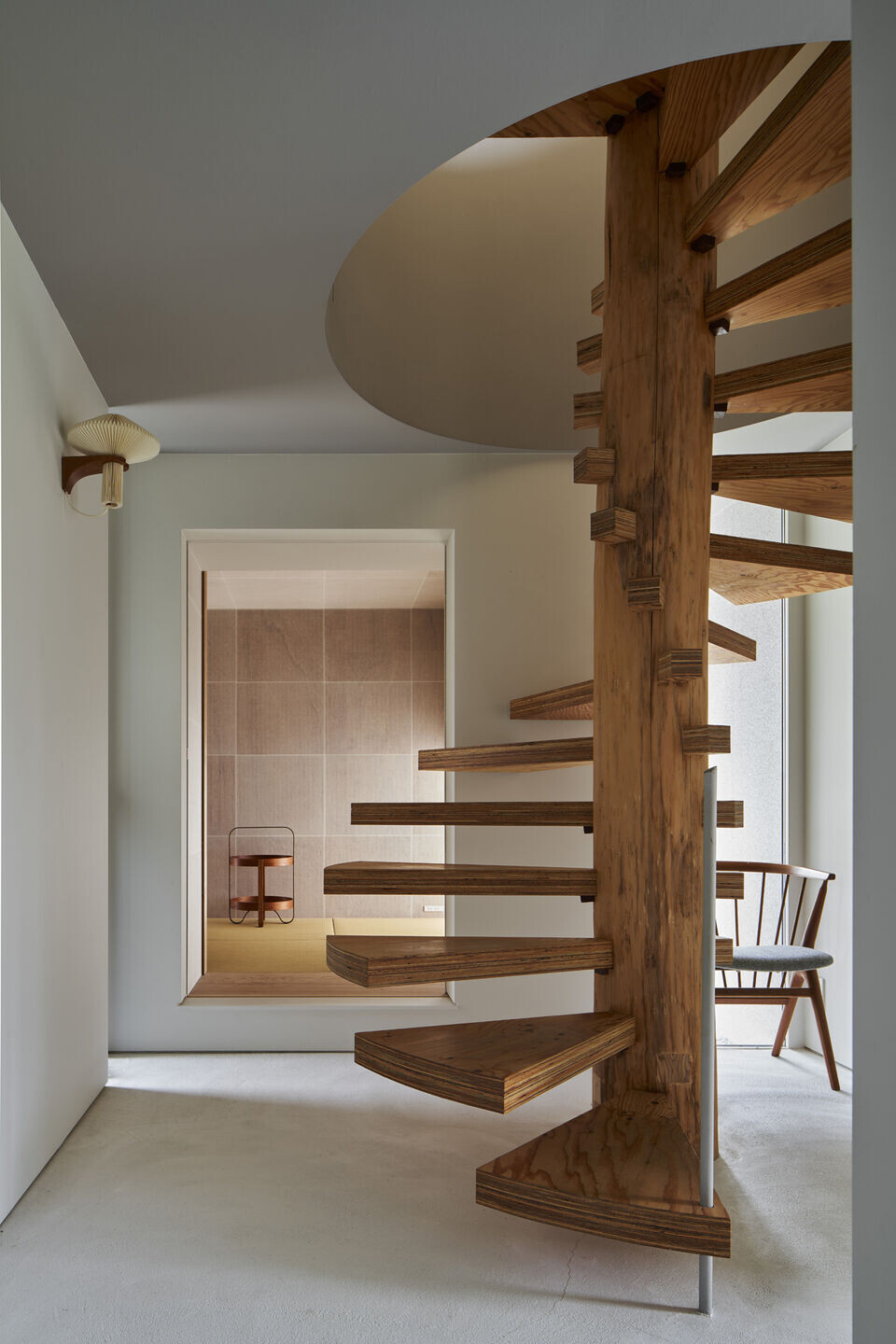
completion: Jul.2019
total floor area: 157.89㎡
structure: wood
location: Nishi-ku, Niigata-city
project architect: Yuki Hirano
structural design: Tetsuya Tanaka(Tetsuya Tanaka Structural Engineers)
contractor: Kenya Nakamura(Nakamura Kensetsu)
photograph: ©Koji Fujii(toreal)
